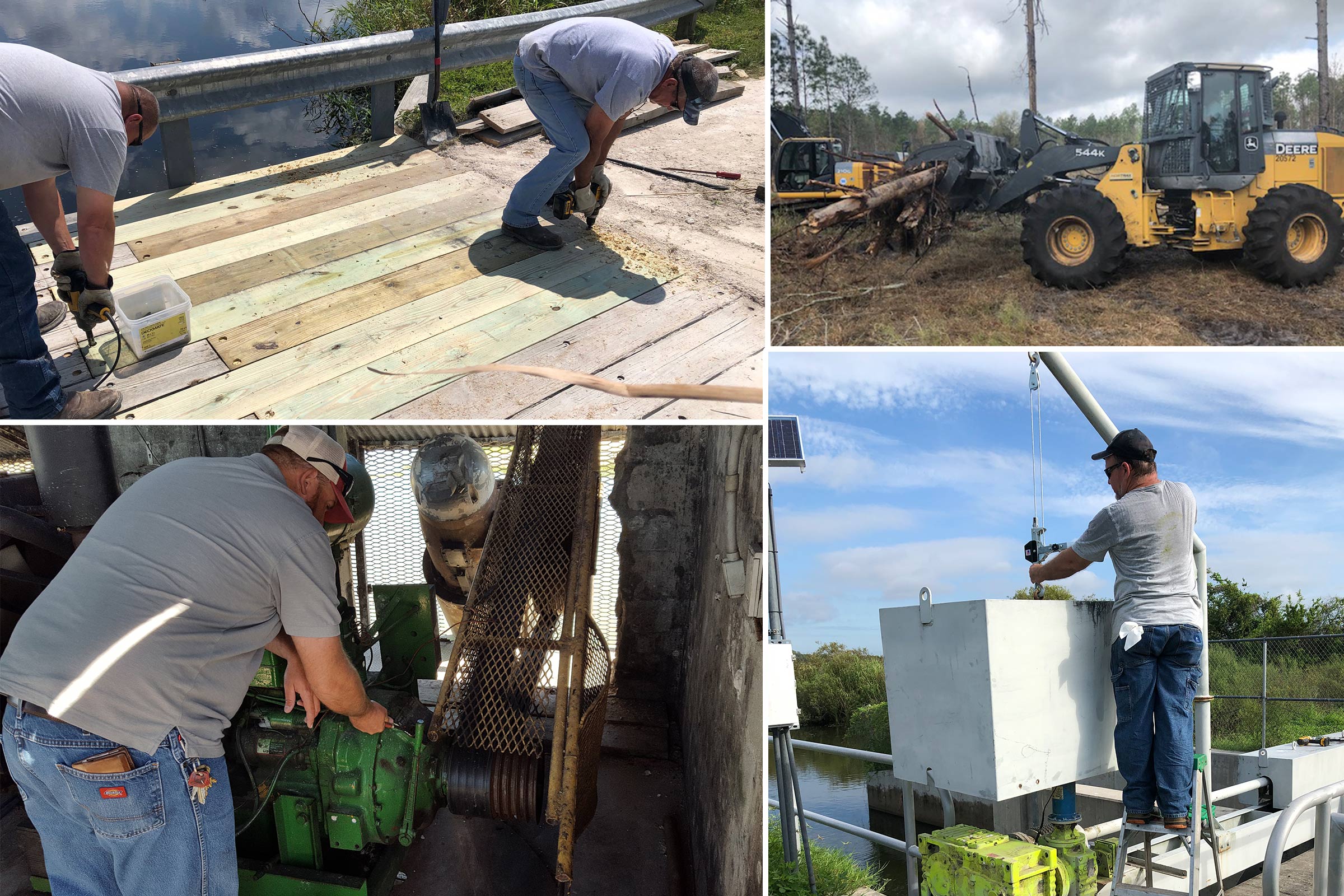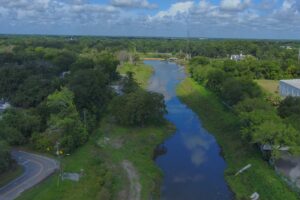Supporting District’s mission requires dedication and diligence
Aug. 20, 2020

Do you ever struggle to get through a “to do” list around your home or yard? Imagine having to complete a list of chores at multiple indoor and outdoor facilities and across more than 700,000 acres of restoration and conservation lands stretching through 18 counties!
When the St. Johns River Water Management District buys a piece of land for flood protection, a restoration project or to protect water resources as a conservation area, the purchase is just the beginning. Our properties certainly have grass to mow (more than 4,300 acres of it), but also require other regular maintenance, which is conducted by the District’s Division of Projects. This work includes repairing flood control levees, refurbishing gates at flood control structures, operating pumping equipment, building/maintaining access roads, fences, gates, observation towers and picnic pavilions on District conservation lands, and operating navigational locks and dams.
Maintenance is a long-term, ongoing process as we work to protect and conserve our precious water resources. The District maintains 115 miles of U.S. Army Corps of Engineers-constructed flood control levees, 175 miles of farm/project levees, 12 major flood control structures, 76 minor water control structures, 15 weirs, and 11 pump stations. Our staff also maintain 69 miles of canals, more than 1,600 miles of roadways and trails, and three navigational locks. It’s all part of our core mission work — flood protection, water supply, water quality and natural systems.
Behind the scenes, our staff train and prepare for emergencies such as hurricanes, while also carrying out our annual work plan, day-by-day. We continue to take advantage of new technology to improve efficiencies, such as hardware and software installed in 2019 that allow several flood control gates to be operated remotely by computer or smartphone. Even with technological advances, some work must still be done the old-fashioned way — by hand. For example, following past hurricanes, you may have seen our staff in your community operating pumps to help alleviate flooding.
We’re grateful to our Governing Board for funding projects that allow us to do this critical work efficiently, save taxpayer dollars and keep our communities and staff safe. Thank you to the staff who care for our public resources with dedication and diligence. Your work is often behind the scenes, but always appreciated!





